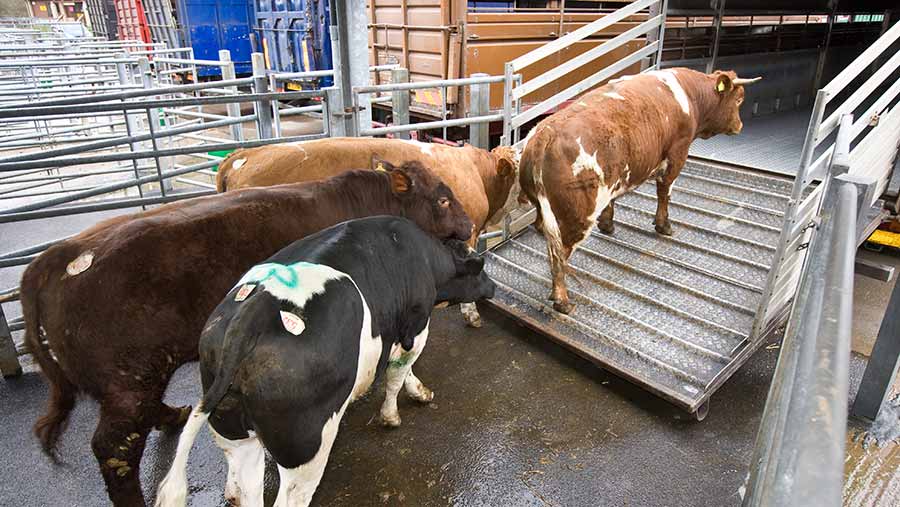Over the years, Nigeria’s interventions in the agricultural sector have been largely on crops, to the detriment of the livestock value chain.
The livestock subsector is an essential component of Nigeria’s agriculture and a key source of domestic wealth and food security with poultry, cattle, goats, sheep, and ram, key source of capital value and incomes for millions of households.
Dr Mohammed Kuta Yahaya, a professor of Agricultural Extension and Development Communication in the Department of Agricultural Extension and Rural Development, University of Ibadan, who articulated a number of actions needed in the sector, said livestock accounted for 40 per cent of the world’s agricultural gross domestic product and the fastest-growing subsector of agriculture.
He, however, noted that the majority of pastoralists in the livestock industry in Nigeria were of Fulani extraction, representing about 90 per cent of cattle herd ownership, which makes up 3.2 per cent of the gross domestic product.
He said while there had been an increasing demand for beef and milk, the main sources of domestic animal protein in Nigeria, evidences had shown the supply gaps, owing to poor production and productivity levels of the indigenous production systems due to neglect and conflict between Fulani herdsmen and farmers.
He noted that in spite of its contribution to the country’s revenue profile, the livestock subsector had suffered inadequate investment by both the public and the private sectors, leaving the semi-skilled Fulani pastoralists to gradually adopt new lifestyle for survival.
It is expedient for the establishment of the National Livestock and Fisheries Development Agency. The agency, like the current National Agency for the Control of HIV/AIDs, established outside the bureaucratic domain of the Federal Ministry of Health, will address in cognizance, the specific issues that are related to livestock modernisation and development. Similarly, the Federal Environmental Protection Agency (FEPA) started in a similar manner and later transformed to the Federal Ministry of Environment.
Also, agencies for mass literacy and nomadic education started under similar circumstances to quickly address peculiar sectoral problems. The agency could immediately start as a presidential task force to address the peculiar problems of the sector and accelerate its resolution without further delay. In the recent packages under the Anchor Borrowers Programme of the Central Bank of Nigeria, pastoralists deserve to be identified, brought together and trained in new skills and mechanisms of pastoralism and assisted with resources acquire modern breeds of animals that yield fast with maximum returns.
“The recommendation for the establishment of the National Livestock and Aquatic Development Agency by the federal government is a deviation from the current practice where bureaucracy has taken over the entire space of governance and the administrative structures of ministries. For instance, the Ministry of Agriculture is encumbered with so many challenges, therefore, has deviated from its policy drive initiative to the implementation they cannot handle because it doesn’t have the manpower and resources.
“The National Livestock Development Agency will address the shortcomings of the mainstream ministry system and the sociological and economic dimensions to livestock development in Nigeria. It will specifically address issues related to livestock multiplication, health, husbandry, welfare of people related to livestock production, marketing and bringing innovation into livestock management and development. It is the only safest and quick step to avert the ongoing crisis and blackmailing of poor herders.
“This is feasible by sponsoring research into animal production into breeding of animals that can grow fast. And they can easily sell and get money into mass investment in diary, animals that can produce milk for their women to sell and make money and creating and optical system, whereby there will be industries around the peripheries of the enclaves where they live so that they can buy them off immediately and make money quickly for them.
According to him, setting up modern abattoirs around their enclaves and make processing and packaging companies around those areas, make processing plants where they can package and sell the meat.
By and large, there is the need to introduce a new dimension to this system of livestock production, where we now talk about integrated approach or multi-herds system, comprising of keeping cattle, sheep, ram and goat at the same time, so that if one is out of stock, there would be another one left for him to live on, not only depending on cattle that cannot sustain their lives. They should also be encouraged to have a multitude of animals – local guinea fowls, local chickens, mass food production, among others, so that they can enjoy good life.



